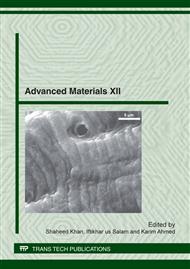p.554
p.560
p.569
p.577
p.585
p.591
p.597
p.602
p.609
Development of APDL Program for Analysis of Composite Material Multicell Beams
Abstract:
Comparison of finite elements and comparison of ANSYS with MSC Patran Nastran, for analysis of composite material multicell beams, is the main idea of this paper. The Finite Element Analysis (FEA) is a valuable tool of modeling and simulation in development, processing, production and application of modern hi-tech materials and structures for reliable design. Multicell beams have important industrial applications in the automotive and aerospace sectors. ANSYS Parametric Design Language (APDL) is an important language in parametric modeling and analysis of structures with simple to complex geometry. Its major advantage is virtual prototyping which can be used to analyze and compare different materials. This work introduces core techniques required for APDL using the case study of composite multicell beams subjected to constrained torsional loading. The published results using MSC NASTRAN have been verified using ANSYS and the corresponding arising issues and notes are the focus of this research study. The details of geometry, material and boundary conditions have been explained in order to construct Finite Element (FE) model. This FE model was simulated several times in ANSYS by the authors using various options of APDL language. A step-wise flowchart was used to detect and reduce problems in iterations of analysis in APDL programming. Results of FEA largely depend on FE model and software used. These issues become prominent while trying to verify results of MSC NASTRAN with ANSYS. The author has introduced three error criteria to select an equivalent finite element of one FEA package (ANSYS) for an equivalent element of other FEA package (MSC NASTRAN). These criteria are the relative error criterion, the absolute error criterion and the combined error criterion. The results from this research provide an insight into finite elements for reliability in design of composite materials. The practical milestones for research to develop FE model and APDL programs related to material research field are also manifested through this paper.
Info:
Periodical:
Pages:
609-616
Citation:
Online since:
May 2012
Authors:
Keywords:
Price:
Сopyright:
© 2012 Trans Tech Publications Ltd. All Rights Reserved
Share:
Citation:


